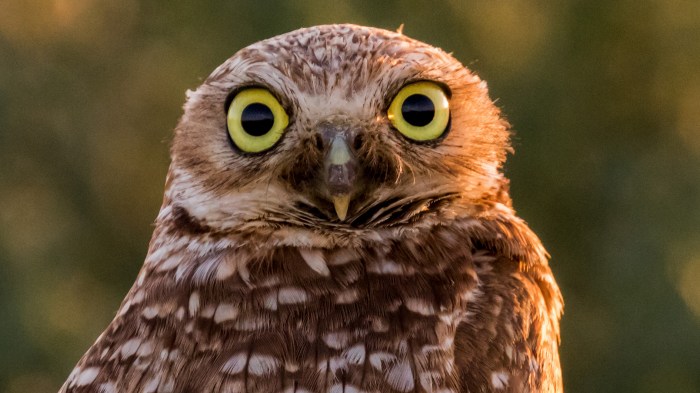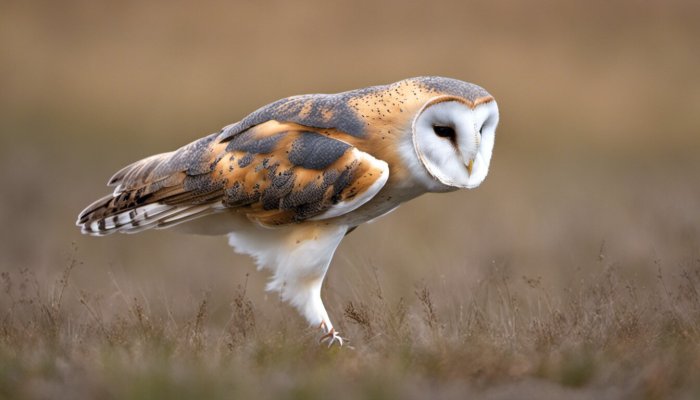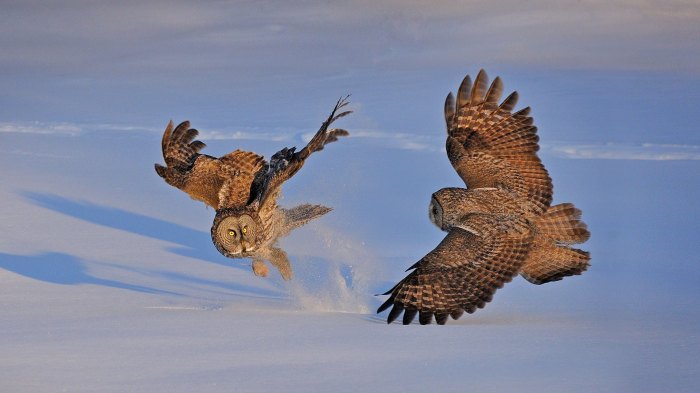In order to look for their prey owls, these nocturnal hunters possess extraordinary adaptations that enable them to thrive in the darkness. From their exceptional vision and hearing to their silent flight and stealthy camouflage, owls have evolved remarkable strategies to locate and capture their quarry.
Owls’ keen eyesight, enhanced by large, forward-facing eyes and specialized retinas, allows them to detect even the faintest movements in low-light conditions. Their asymmetrical ears, coupled with facial discs that amplify sound, provide owls with exceptional auditory capabilities, enabling them to pinpoint the location of prey with remarkable accuracy.
Nocturnal Hunting Adaptations

Owls are nocturnal predators, meaning they hunt at night. Their specialized vision and hearing aid them in finding prey in low-light conditions. Owls have large, forward-facing eyes that are sensitive to light, allowing them to see in dim environments. They also have excellent night vision due to a layer of cells in their eyes called the tapetum lucidum, which reflects light back to the retina, increasing the amount of light available for vision.In
addition to their vision, owls have exceptional hearing. Their ears are asymmetrically placed on their heads, which helps them to pinpoint the location of sounds. They also have facial discs, which are concave discs of feathers around their eyes, that help to funnel sound waves towards their ears.
This enables them to accurately locate prey even in complete darkness.Owls’ silent flight is another adaptation that aids them in hunting. Their feathers are soft and have a velvety texture, which reduces the sound of their wings flapping. This allows them to approach prey undetected, giving them an advantage in capturing their quarry.
Camouflage and Stealth

Owls use a variety of camouflage techniques to blend into their surroundings. Their plumage is often mottled or barred, which helps them to break up their Artikel and make them less visible to prey and predators alike. Some owls also have ear tufts or facial markings that resemble the eyes of other animals, which can confuse or startle potential threats.Owls’
ability to remain motionless for extended periods is also crucial for their hunting success. They can perch on a branch or rock for hours, waiting for prey to come within range. Their patience and stillness allow them to blend seamlessly into their surroundings, making them almost invisible to unsuspecting animals.
Hunting Techniques

Owls employ various hunting strategies depending on their species and habitat. Some owls, such as the great horned owl, are perch hunters. They perch on a high vantage point and scan the area below for prey. When they spot a potential target, they swoop down silently and capture it with their powerful talons.Other
owls, such as the barn owl, are aerial hunters. They fly low over the ground, using their keen hearing to locate prey. When they hear a rustling sound, they dive down and seize their quarry.Ground hunting owls, such as the short-eared owl, hunt by walking or hopping on the ground.
They use their long legs and sharp talons to capture small rodents and other ground-dwelling animals.
Prey Selection and Diet: In Order To Look For Their Prey Owls
Owls target a wide range of prey, including rodents, rabbits, birds, fish, and insects. Their prey selection varies depending on species, habitat, and season. For example, the great horned owl is a generalist predator that hunts a variety of animals, while the barn owl specializes in hunting rodents.The
nutritional value of different prey items varies, but all owls require a diet that is high in protein and fat. Rodents are a good source of both protein and fat, while birds and fish are primarily sources of protein. Owls also consume insects, which provide essential vitamins and minerals.
Q&A
How do owls’ facial discs aid in hunting?
Owls’ facial discs, composed of specialized feathers, act as sound reflectors, enhancing their ability to locate prey by amplifying and directing sound waves towards their ears.
Why are owls able to fly silently?
Owls’ flight feathers possess a soft, velvety texture that minimizes turbulence and reduces noise, allowing them to approach prey undetected.
What is the significance of owls’ ability to remain motionless for extended periods?
Owls’ ability to remain motionless for hours on end enables them to blend seamlessly into their surroundings, increasing their chances of ambushing prey.